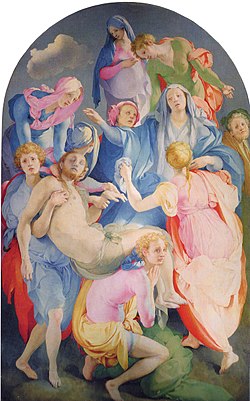XVIth century - the first third of the XVII century
Mannerism

description
From Italian maniera – manner.
Mannerism was an art movement of the 16th – first third of the 17th centuries, which arose in Italy and spread to the territories of France, Germany, the Netherlands and the Czech Republic. This movement reflects the crisis of the Renaissance humanist ideals. Art critics believe that Mannerism is an early phase of the Baroque. The fundamental difference between them is that there is less pomp, idleness, and elements of wealth in mannerism.
The main genres are religious, mythological, portrait.
Key ideas:
Mannerism – “anti-Renaissance”, intellectual.
This art is not for everyone, but only for the elite. Artistic principles of mannerism gave rise to the phenomenon of “subjective vision of the world”, due to which a conflict arose between the divine and the satanic in man; form prevails over content, irrational actions prevail over rationality.
Mannerism contains many hidden and allegorical signs that can be misunderstood without having a certain knowledge base, or even being a member of a certain group.
Departure from the realism of the Renaissance – the loss of harmony between man and nature, cutesy posing, expressive pretentiousness, catchy presentation of the plot.
Characteristic features: excessive gracefulness, eroticism (half-naked figures with languid gazes), spiritualism (mythological, religious painting), chiasm, overloaded composition, bright color palette, specific transmission of perspective. The proportions of the figures are slightly deformed, sometimes serpentine, in exotic impractical decoration, aristocratic whiteness is inherent in the body. The depicted ones are characterized by emotionality (suffering, awareness of inner emptiness, the path to catharsis, joy) and dynamism.
